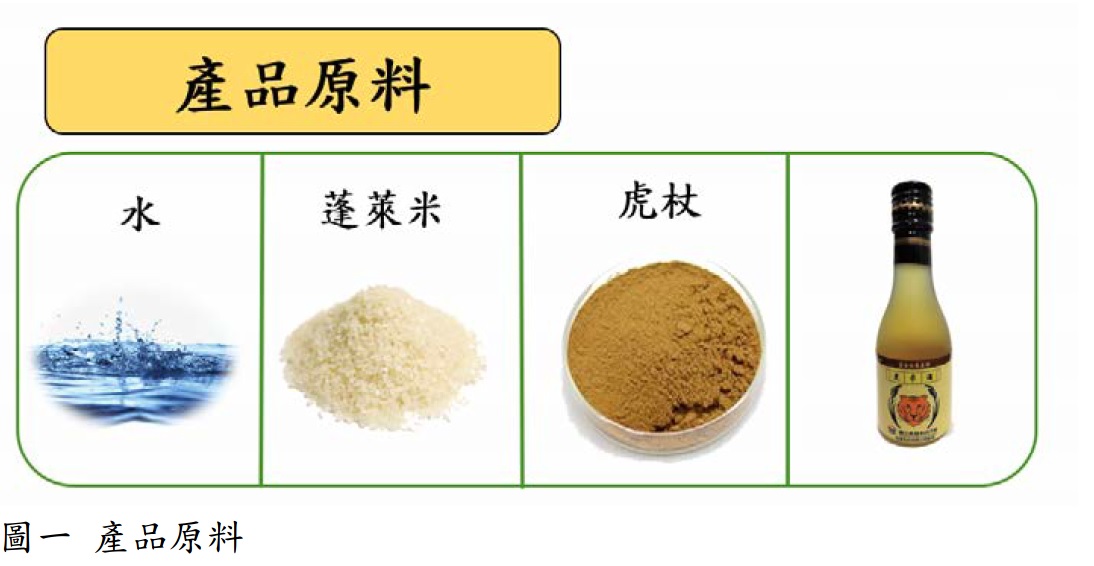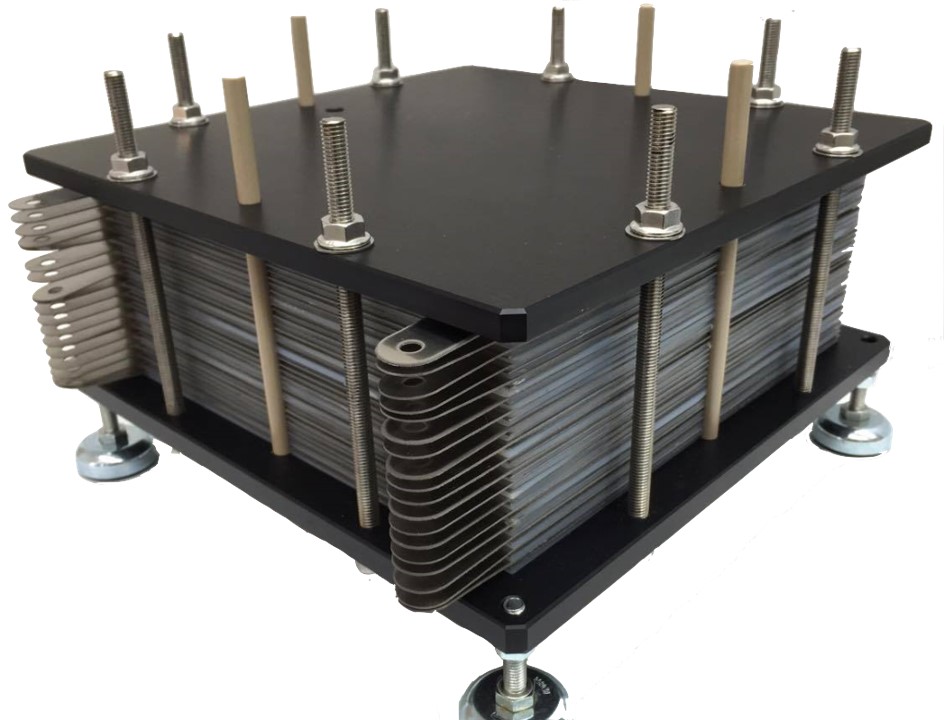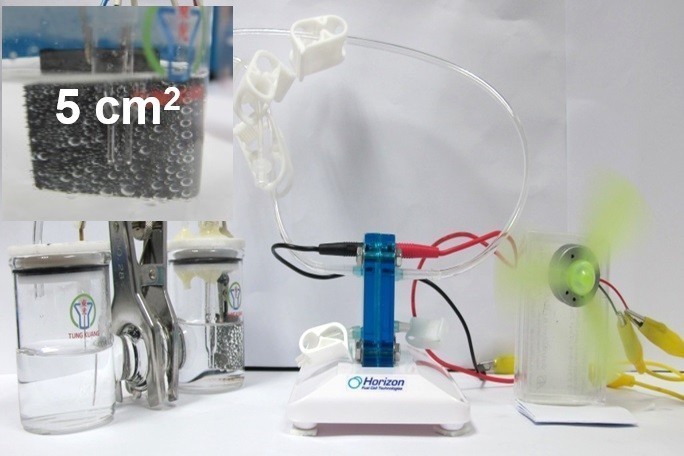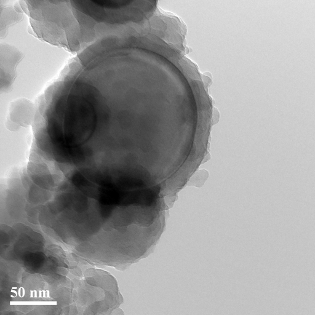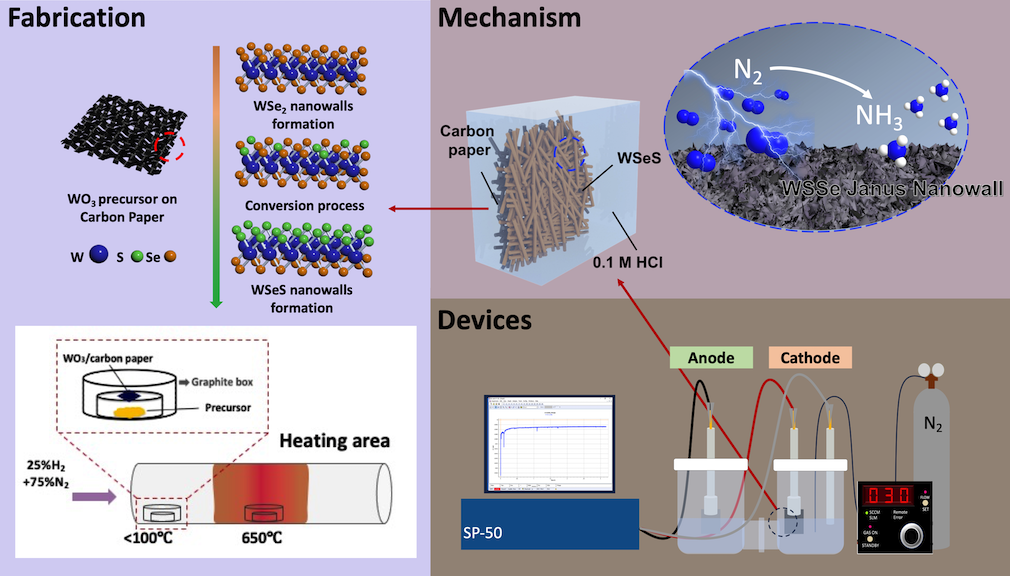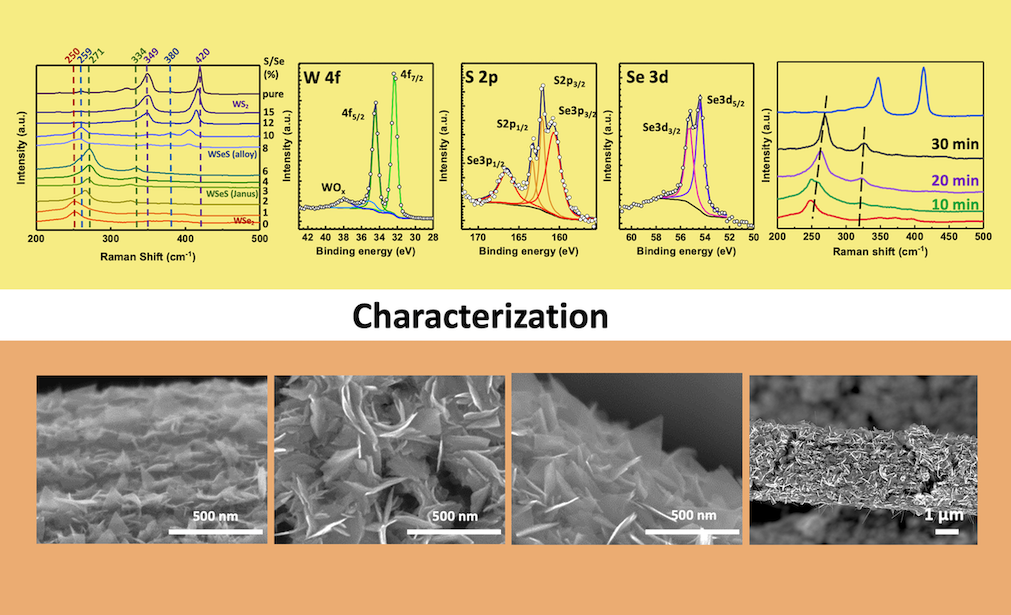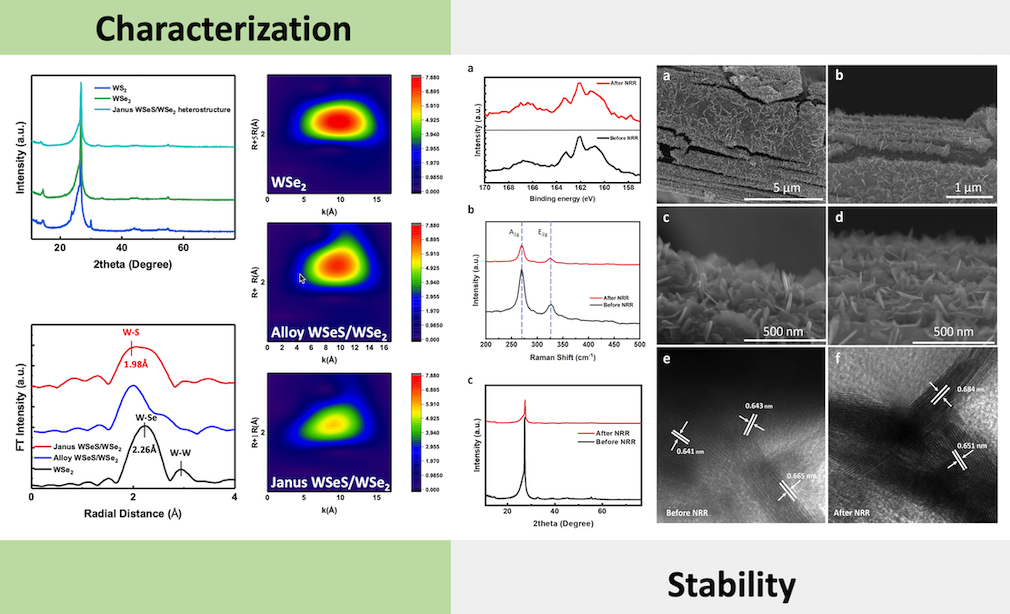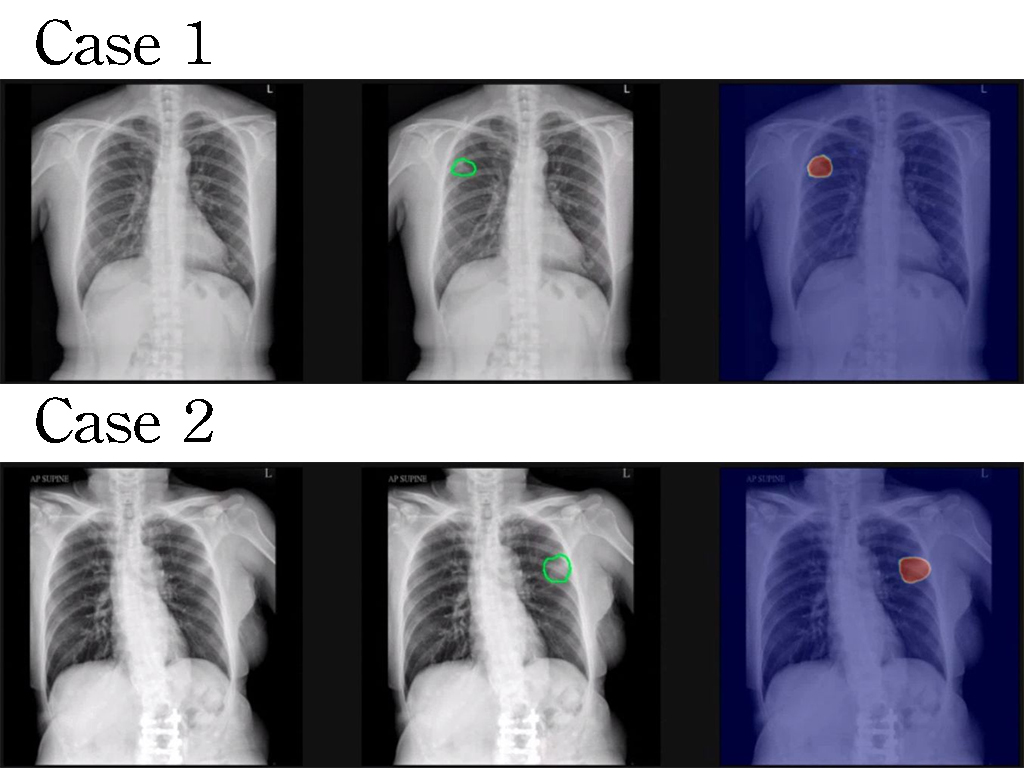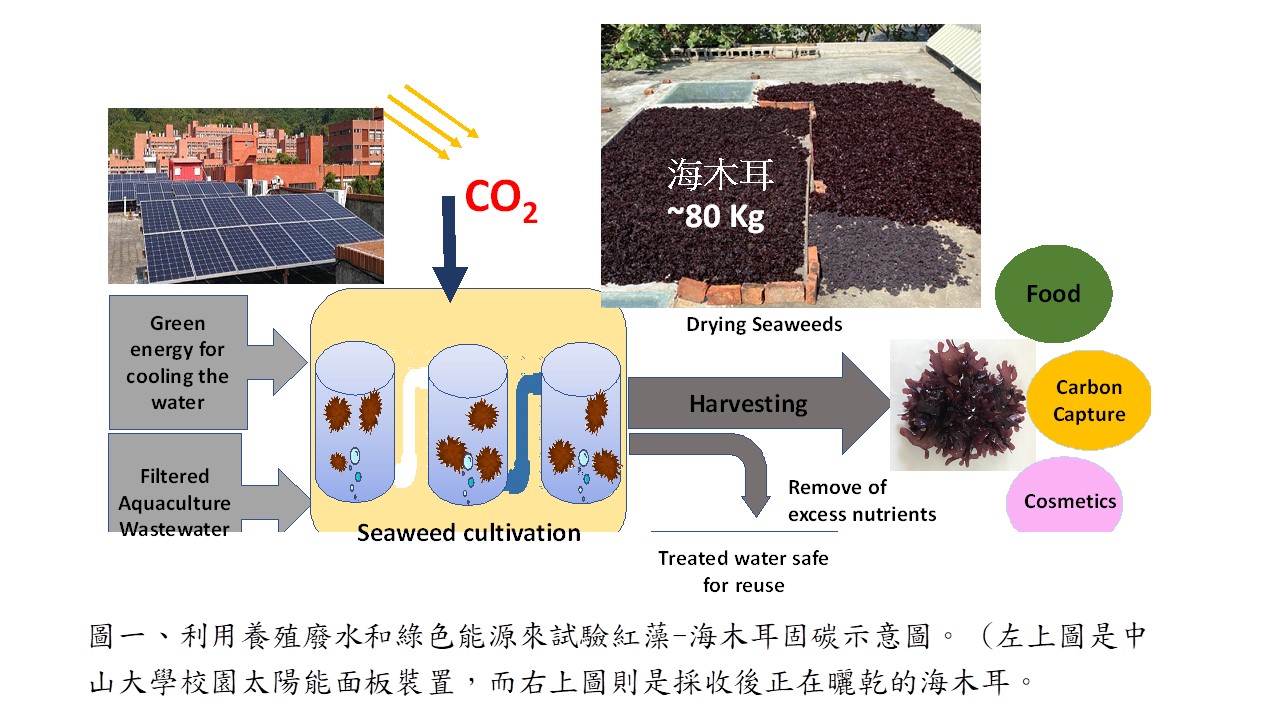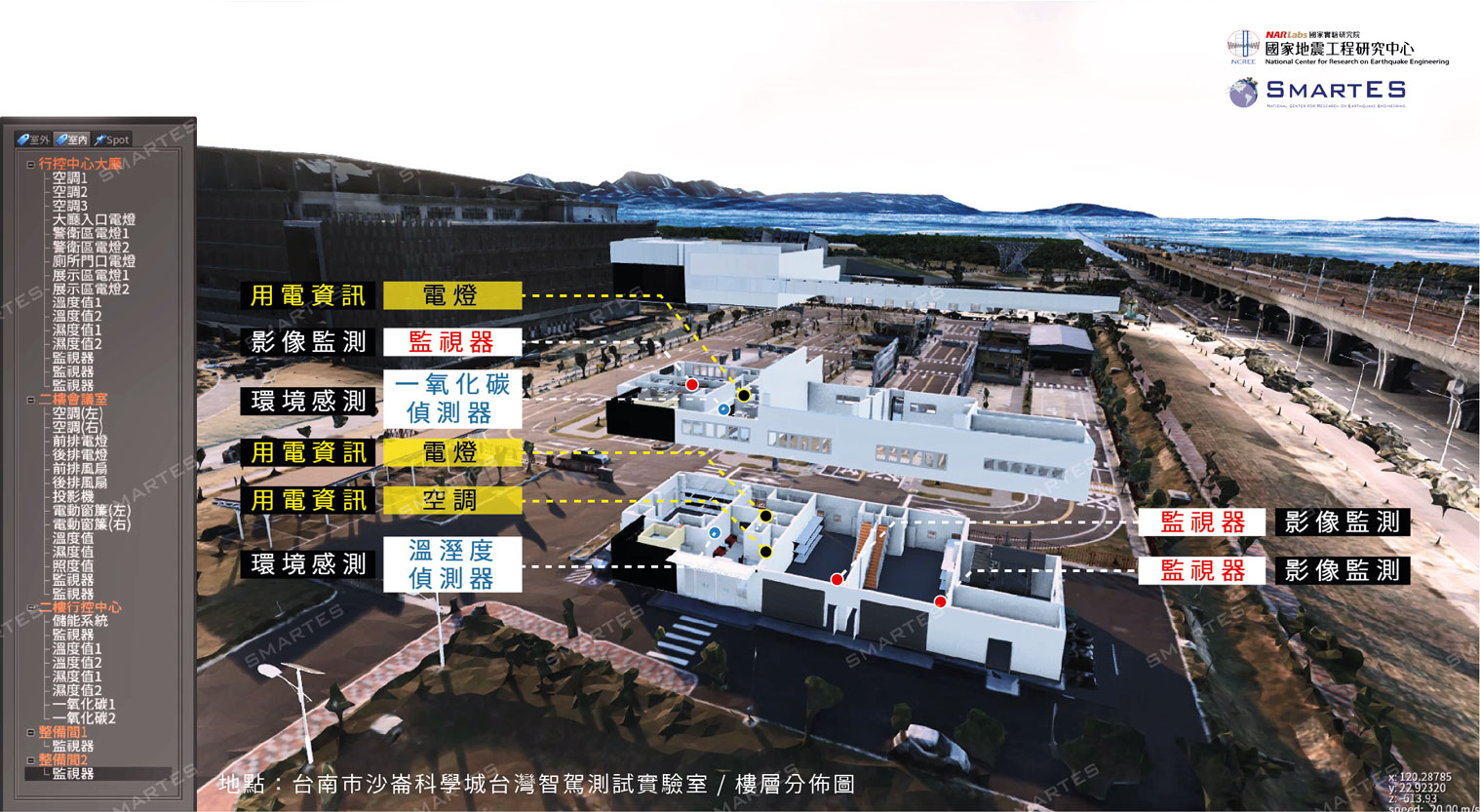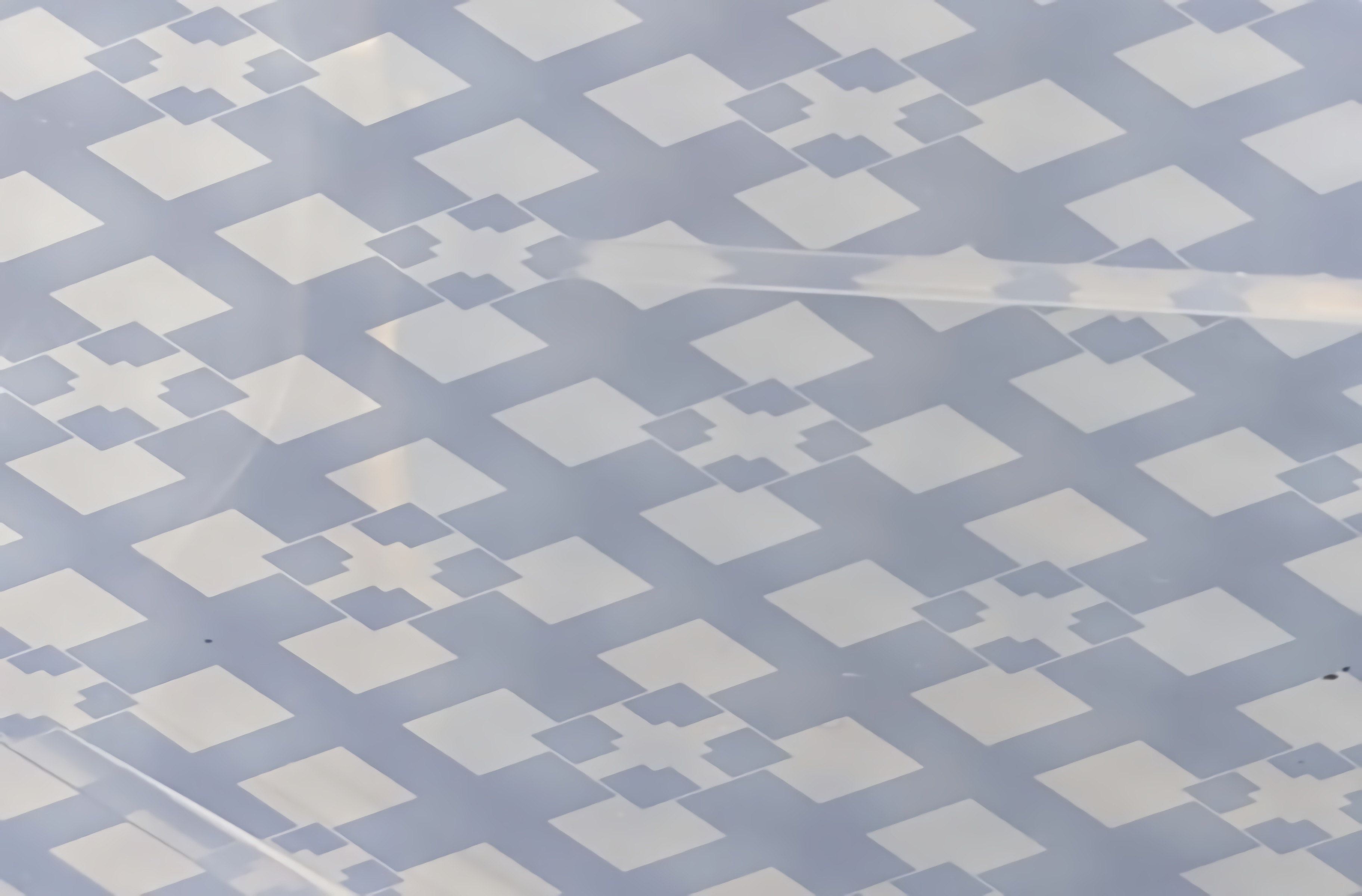| Technical Name | Designed Janus Transition metal dichalcogenides Nanowall Electrodes with High Faradaic Efficiency for Nitrogen Reduction | ||
|---|---|---|---|
| Project Operator | National Tsing Hua University | ||
| Project Host | 闕郁倫 | ||
| Summary | This technique led to the successful synthesis of a 3D advanced material, Janus TMD. It applies emerging electrochemical NRR, achieving high selectivityFaradaic efficiency(FE) in ammonia conversion. The surface modification can be conducted using a plasma-assisted-seneizaion process, for which JTMDs were successfully obtained. The NRR behaviors were carried out using a potentiostat, resulting in the production of ammonia. spectrophotometer revealed a FE of up to 35.24. |
||
| Scientific Breakthrough | Electrochemical nitrogen reduction (NRR) has been a promising catalytic technology in recent years. Transition metal chalcogenides have been identified as suitable alternatives to precious metals. Our technique achieved three breakthroughs: direct deposition of the material on substrates to create the Janus TMDanalysis of energy changes during nitrogen conversion. Our team successfully synthesized 3D Janus WSeS/WSe2 nanowallsachieved a high Faradaic efficiency of 35.24 in NRR. |
||
| Industrial Applicability | Liquid ammonia has been considered as a crucial energy carrier in the future. This technology offers promising prospects with its ability to synthesize ammonia under mild conditionsdemonstrate superior catalytic efficiency, particularly in the growing global green hydrogen market. Janus transition metal dichalcogenides (TMDs) exhibit intriguing electronic properties distinct from traditional TMDs, presenting various possibilities for Taiwan’s semiconductor industry. |
||
| Keyword | Electrochemical Nitrogen Reduction Reaction Janus Transition Metal Dichalcogenides 3D nanowalls structure Heterostructure Green Nitrogen Reaction Hydrogen Storage Technology Nitrogen Reduction Catalyst Wastewater Treatment Chemical Vapor Reaction Vacuum Thin Film Coating Technology | ||
- Contact
- Yu-Ren Peng
- elipeng@gapp.nthu.edu.tw

